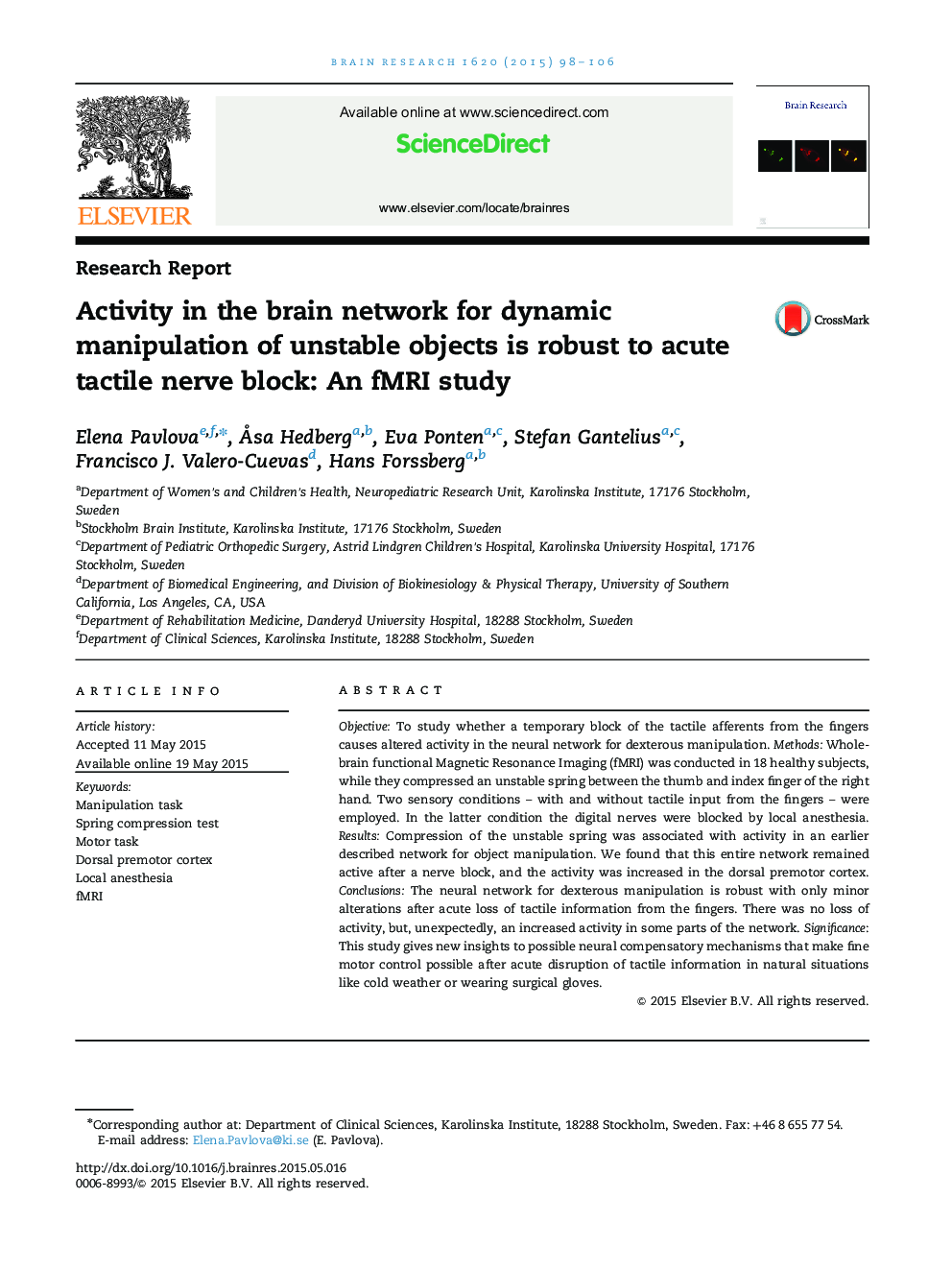| Article ID | Journal | Published Year | Pages | File Type |
|---|---|---|---|---|
| 6262978 | Brain Research | 2015 | 9 Pages |
â¢We investigated brain activity during dexterous task in healthy subjectsâ¢The task was performed with and without tactile input from fingersâ¢No loss of activity in a motor network was revealed after acute tactile nerve blockâ¢Increase of activity was observed in the dorsal premotor cortex without tactile input
Objective: To study whether a temporary block of the tactile afferents from the fingers causes altered activity in the neural network for dexterous manipulation. Methods: Whole-brain functional Magnetic Resonance Imaging (fMRI) was conducted in 18 healthy subjects, while they compressed an unstable spring between the thumb and index finger of the right hand. Two sensory conditions - with and without tactile input from the fingers - were employed. In the latter condition the digital nerves were blocked by local anesthesia. Results: Compression of the unstable spring was associated with activity in an earlier described network for object manipulation. We found that this entire network remained active after a nerve block, and the activity was increased in the dorsal premotor cortex. Conclusions: The neural network for dexterous manipulation is robust with only minor alterations after acute loss of tactile information from the fingers. There was no loss of activity, but, unexpectedly, an increased activity in some parts of the network. Significance: This study gives new insights to possible neural compensatory mechanisms that make fine motor control possible after acute disruption of tactile information in natural situations like cold weather or wearing surgical gloves.
